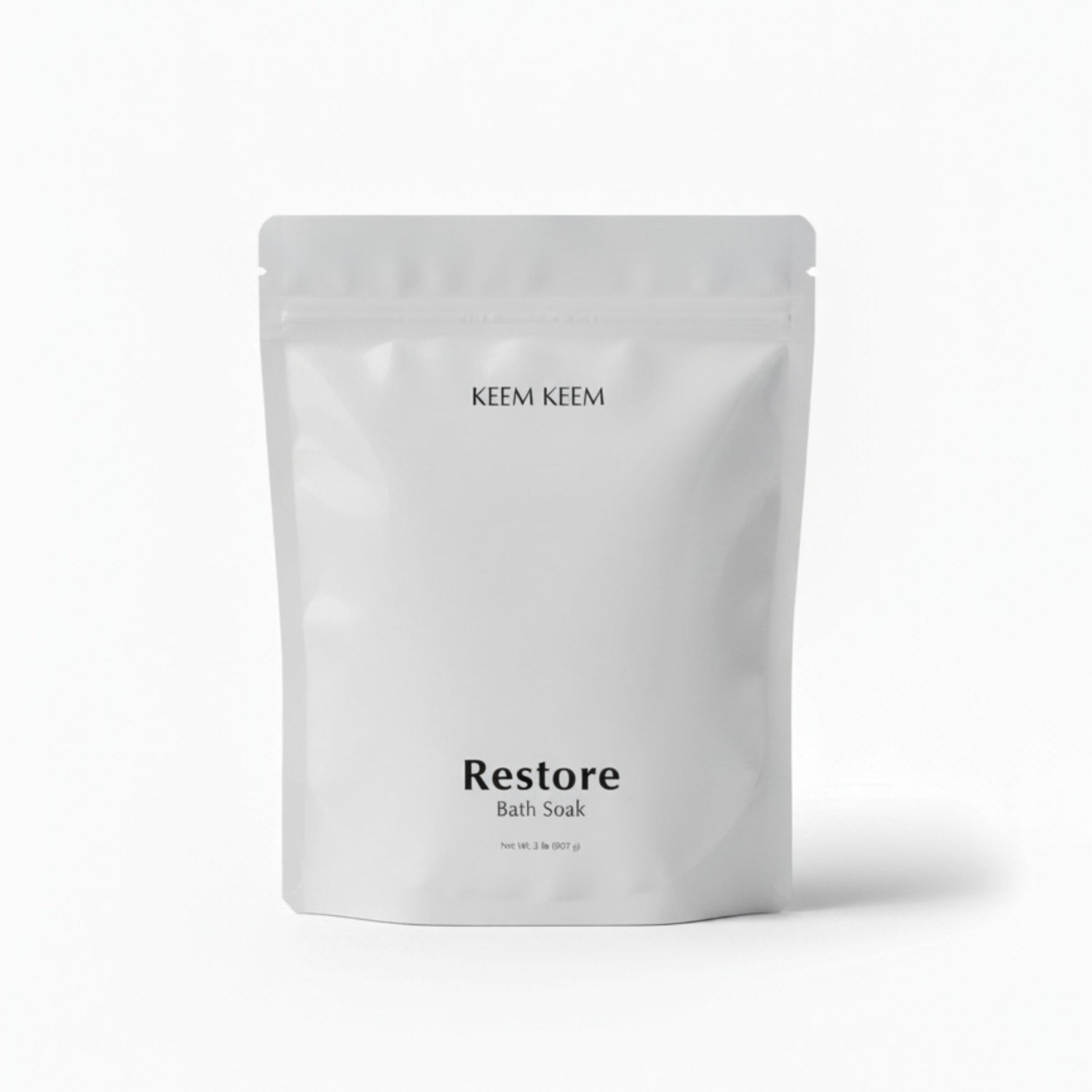Magnesium and Discomfort: What the Research Suggests
Share
Chronic pain affects millions of people every year, and finding safe, effective ways to manage it remains a challenge. While no single solution works for everyone, research continues to highlight the potential role of magnesium in supporting the body’s pain response.
Magnesium impacts nerve signaling, muscle relaxation, and inflammation pathways — all of which are connected to pain perception. In this post, we’ll look at what the research shows, why magnesium matters, and how mineral bathing can be a practical, restorative way to support comfort.
Explore Trifecta Bath Soak | Restore Bath Soak | Shop Shower Steamers
Why Magnesium Matters in Pain Response
-
Neuromuscular Regulation
Magnesium helps regulate nerve excitability and neurotransmitter release. Research suggests low magnesium levels may be linked to heightened sensitivity to pain signals【1】. -
Muscle Relaxation
Pain and tension often go hand in hand. Magnesium helps relax muscles by controlling calcium flow in muscle cells, which can reduce spasms or cramping【2】. -
Inflammatory Pathways
Studies indicate magnesium deficiency may amplify inflammatory markers, which can worsen pain perception【3】. Adequate magnesium intake has been linked to healthier inflammatory balance.
What the Research Shows
-
A meta-analysis found magnesium supplementation may reduce migraine frequency and intensity【4】.
-
Clinical studies suggest magnesium infusions can reduce postoperative pain and decrease opioid use【5】.
-
Low magnesium levels have been associated with fibromyalgia, chronic back pain, and muscle pain conditions【6】.
While much of the research focuses on supplementation or intravenous delivery, these findings highlight magnesium’s essential role in pain pathways.
Mineral Bathing as a Supportive Approach
Mineral bathing provides two levels of benefit:
-
The Heat of Warm Water → increases circulation, reduces stiffness, and encourages muscle relaxation.
-
Transdermal Magnesium → while debated, studies suggest topical absorption may help replenish magnesium levels【7】.
That’s why Trifecta is formulated as an extra-strength bath soak:
-
60% pure Zechstein magnesium flakes
-
25% Dead Sea salt (trace minerals)
-
10% Pink Himalayan salt (supportive minerals)
-
3.5% Arnica oil (used traditionally for bruising and soreness)
Together, this triple-salt foundation supports relief from muscle tension, inflammation, and physical discomfort — making it ideal for those managing ongoing pain or recovery.
Trifecta Bath Soak is built specifically for chronic pain support and recovery.
How to Use Trifecta for Pain Relief Support
-
Fill a warm bath.
-
Add 1–2 cups of Trifecta Bath Soak.
-
Soak for 20 minutes, focusing on slow breathing and full-body relaxation.
-
Use 3–4 times per week during periods of heightened pain or post-activity recovery.
Final Thoughts
Magnesium plays a key role in how the body processes pain. While no single solution works for everyone, research continues to suggest magnesium may support pain relief and recovery pathways. With its triple-salt formula and added Arnica oil, Trifecta Bath Soak offers a restorative, at-home way to integrate magnesium into your self-care routine.
Explore the full collection:
Citations
-
Mauskop, A., & Varughese, J. (2012). Why all migraine patients should be treated with magnesium. Journal of Neural Transmission.
-
de Baaij, J. H., et al. (2015). Magnesium in man: Implications for health and disease. Physiological Reviews.
-
Nielsen, F. H. (2018). Magnesium deficiency and increased inflammation: Current perspectives. Journal of Inflammation Research.
-
Chiu, H. Y., et al. (2016). Effect of magnesium supplementation on migraine: A meta-analysis. Nutrients.
-
De Oliveira, G. S., et al. (2013). Systemic magnesium to improve postoperative analgesia: A meta-analysis. Anesthesia & Analgesia.
-
Bagis, S., et al. (2013). Is magnesium deficiency responsible for fibromyalgia? Clinical Rheumatology.
-
Watkins, K., et al. (2016). Transdermal magnesium therapy: An evaluation. Magnesium Research.
Disclaimer
This blog is for informational purposes only and is not intended to diagnose, treat, cure, or prevent any disease. Please consult a healthcare professional for medical concerns.
